Art Fairs
10 of the Best Artworks at Frieze New York 2018
From Robert Therrien's oversized table and chairs to Pavel Ilie's twist on Brancusi, see what that caught the eye of artnet News's editor-in-chief.
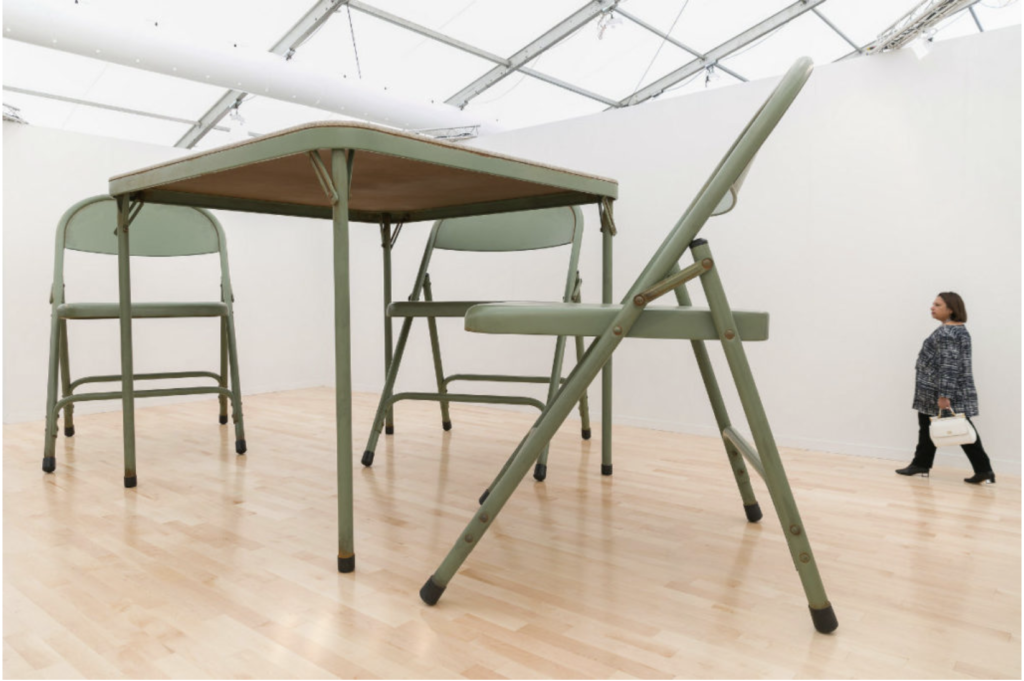
From Robert Therrien's oversized table and chairs to Pavel Ilie's twist on Brancusi, see what that caught the eye of artnet News's editor-in-chief.

Andrew Goldstein

No collector is an island, but some art fairs are, as Frieze New York once again reminds us in its big tent on the equivalent of the city’s Île Saint-Louis. Hot? You bet. Curated? As always. There was plenty of mind-expanding art on hand to make one forget the swelter, with exciting work from new names and also fresh offerings from familiar ones. Here are some standouts from this years fair that are worth tracking down in person.
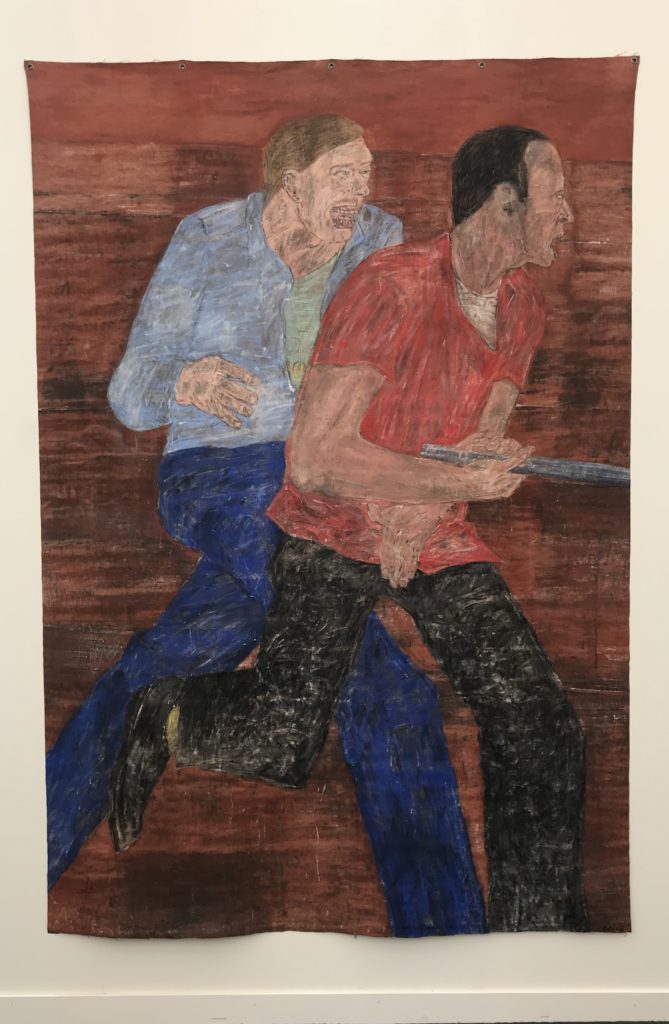
Nearly a decade and a half after his passing, the artist Leon Golub’s expression of an inflamed, rampaging United States of America is as pressing as ever, as this painting of white rage at Hauser & Wirth’s booth makes abundantly clear. Made in 1984, the year of Ronald Reagan’s re-election and the beginning of the crack epidemic, it depicts two men—one clutching a truncheon, with the other hand on his groin (it’s not subtle)—as they race toward an unseen enemy. It’s from Golub’s series of abstracted, placeless, indeterminate riot scenes in which he distilled the fury he saw in his country down to its atavistic essence. Here, a liberal might see two Trump supporters outside a convention; a Trump supporter might see two left-wing protesters. If you find this work disturbing, you might want to steer clear of Golub’s current survey at the Metropolitan Museum of Art, “Raw Nerve,” which delves deeper into the violence that ensues when mankind’s primitive nature is unleashed by political forces.
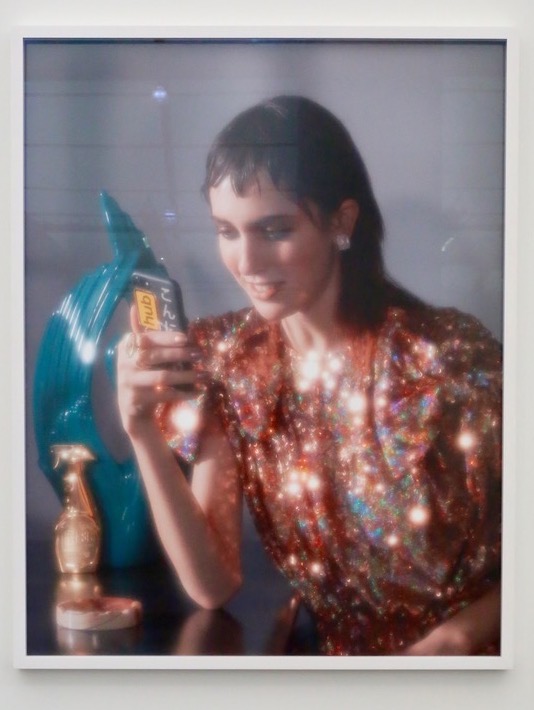
A master of the sardonic, polished lifestyle photo that feels both retro and futuristic at the same time, Roe Ethridge has long been piggybacking his artistic work onto the commercial photo shoots he does for fashion magazines, making his sets and models perform double-duty. It’s a savvy move that often embeds Easter eggs for his fans to search out—like the Moschino logo on the gilded Windex bottle—and it also infuses his art with the of-the-moment cultural sensibilities advanced by the fashion world. (This photo may also be the first time he has featured a transgender sitter in his gallery work.) Sparkling, assured, and almost propagandistic in that way advertising has, Ethridge’s photography ages well, and it’s surprising his appearances in the Whitney Biennial and Greater New York have not yielded more focused museum attention. (He’s only had one solo museum outing in the US, and it was at Cincinnati’s Contemporary Art Center during last year’s FotoFocus Biennial.) Galleries seem to love him, though, and he just opened a new show with Barbara Gladstone in Brussels.
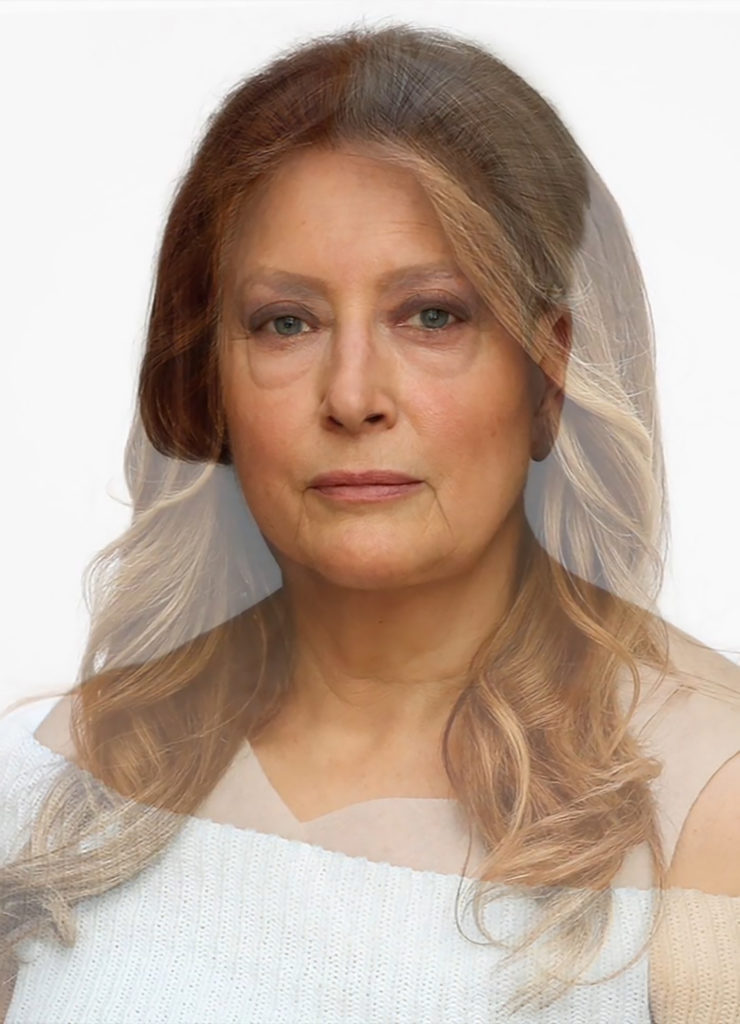
Martha Wilson first began impersonating America’s First Ladies in 1985, when, full of indignation over the White House’s part in the Culture Wars, she assumed the appearance of Nancy Reagan and recited a speech: “As an actress I can assure you that the image one wants to project is sometimes different than how one feels. For example, I always feel inadequate to the role of First Lady, which has been thrust upon me. So I use various rituals and acting techniques to manipulate my appearance. Because if the picture is OK, the facts will fade.” Over the years, Wilson also adopted the roles of Barbara Bush, Second Lady Tipper Gore, and other top political spouses. (Then she took time off to devote herself more fully to Franklin Furnace, the performance nonprofit she founded in 1976 to showcase out-of-the-mainstream art like her own.)
Over the past decade, she has resumed her own work, along with her First Lady series—and it’s a relief, too, because no First Lady has ever been as ripe for her empathic dissection as Melania Trump, a closely tracked enigma whose spokesperson has to continually defend her worthiness, recently stating, for the record, that “she has not failed.” To tackle Melania, Wilson—who was also one of the original Guerrilla Girls—has created a video that shows the stern, taut, and professionally preserved visage of the First Lady as she gradually furrows into wrinkles, grows grey, gains bags under her eyes, and morphs into a naturally aged woman of 71… who happens to be a wanly smiling Martha Wilson. Were she to re-recite the words she spoke as Nancy Reagan, the piece would be even more complete.
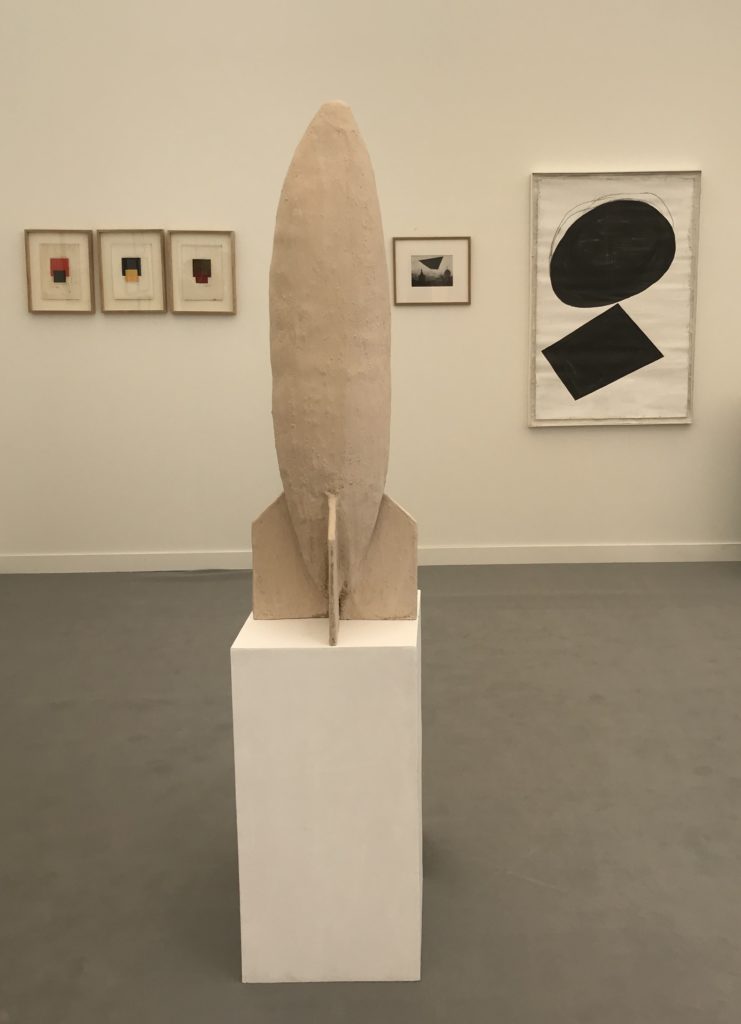
A Romanian artist who used photography to slyly subvert the Soviet doctrines of his country—by, for instance, taking photos of the countryside that showed it as a place of lonely individualism rather than a collectivist laborer’s paradise—Pavel Ilie eventually emigrated to Switzerland and then fled to Canada, where he began making sculpture on the side as he struggled to make ends meet. This piece gives a good idea of what was on the artist’s mind as he worked on the other side of the Atlantic as the Cold War arms race began heating up—but again, the tone is that of subversive humor. Made of plaster, clay, and tempera, this Platonic Bomb evokes the totemic forms of Ilie’s fellow Romanian Constantin Brancusi. It’s a Bird in Space for the Star Wars era.
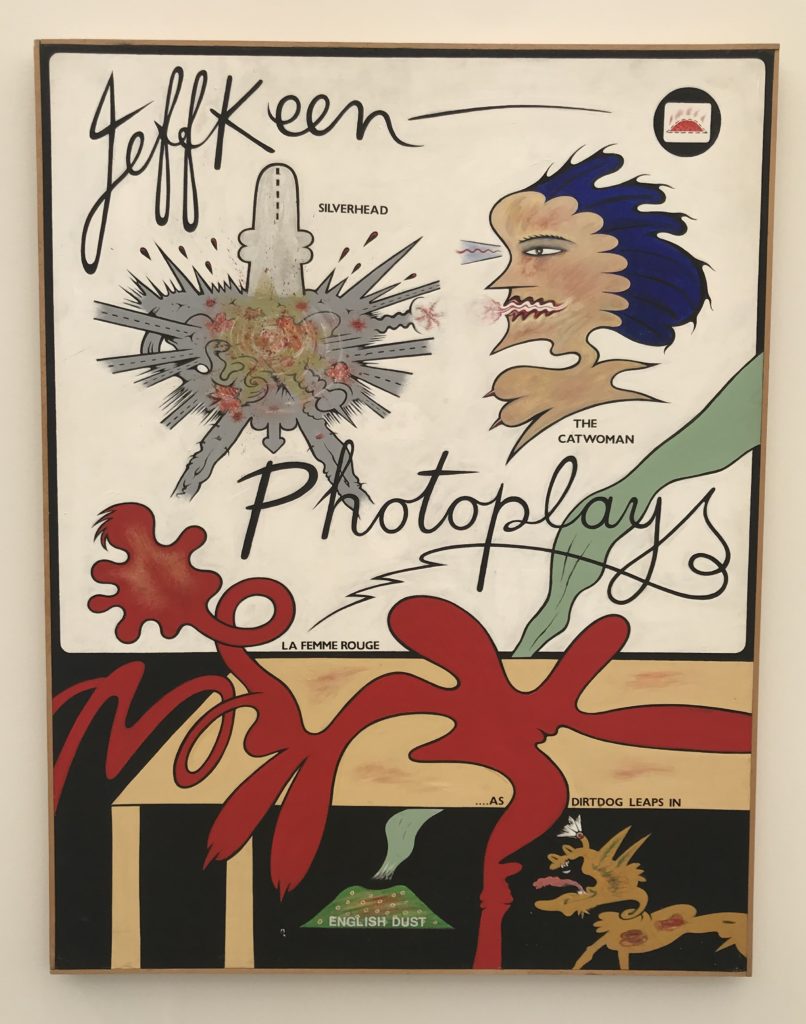
Jeff Keen was a British artist who drove tanks in World War II and, after the war, retreated to the seaside town of Brighton, where he spent most of the rest of his life making funny little collaged films that reflected his views on life. He didn’t travel much, but forged a strong connection with American culture through imagery, importing its pop-culture iconography into his work and giving it a zesty psychosexual twist. (His wife Jackie appears in several of them, playing a character named Vulvana.) His experimental films—which he built out of drawings that he elaborately and fancifully storyboarded—also draw upon the English zeitgeist, evolving from the postwar fallout of the 1950s to the cultural upheaval of the ‘60s, when his films get really zany. A painter as well, he could easily be confused as a member of Chicago’s Hairy Who band of comix-era artists—particularly with this canvas, which almost functions as a comic strip. Now a cult hero in Britain, Keens received a Tate Modern survey when he died in 2007. Now, Frieze has served as a bracing introduction to American audiences, with several works being snapped up during the first VIP preview.
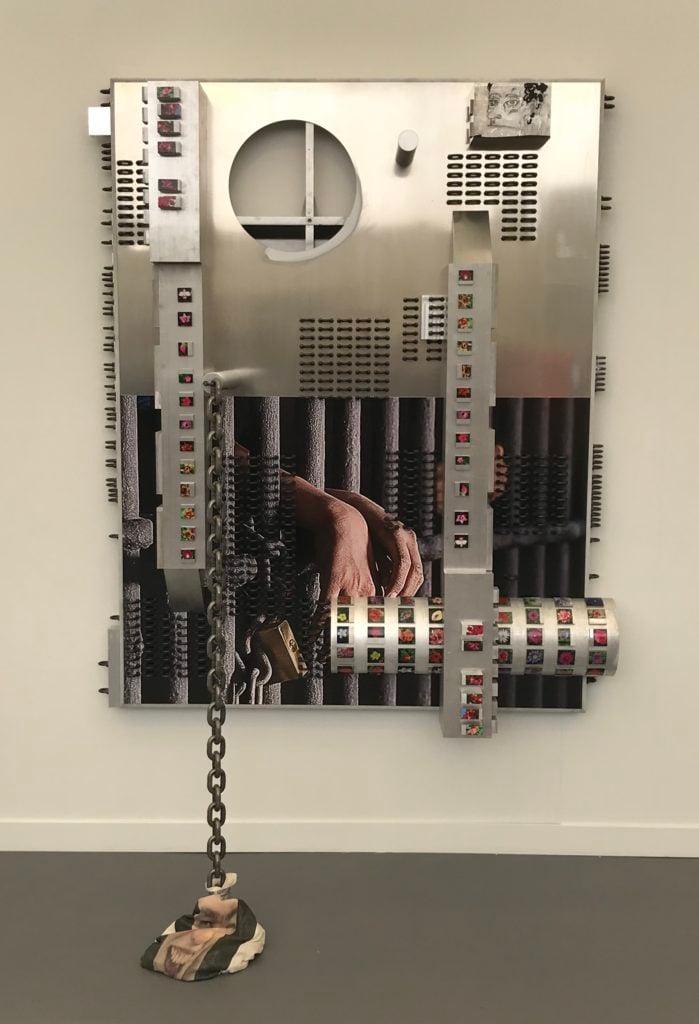
Jordan Wolfson’s violence-laced animated films may be tremendously beautiful, but in sculpture his language is far more butch, drawing on a pool of aggression that would seem familiar to Leon Golub (or Anne Imhof, for that matter—now that would be a two-person show). These latest wall pieces, fresh from the studio, are tough as can be, gleaming with industrial rolled steel, studded with U-rings like a punk’s leather jacket, and presenting a heavy-duty inverted cross. A bar jutting from the front dangles a chain that, instead of a wrecking ball, ends in a balled-up t-shirt printed with a hideously grinning face. On the top right, the artist has evidently created a self-portrait; the lower half is printed with a photo of an incarcerated man. The only whiff of beauty comes from the images of flowers affixed to the front, but they come off as grimly mocking, even cruel.
Powerful, banal, and deeply American, the wall sculpture—whose chain references the disturbing animatronic Colored sculpture, which just went on view at the Tate Tanks this week—is flanked by two similar wall works printed with images from the Charlottesville riot and the misleading secret abortion video that right-wing activists used to slander Planned Parenthood. (All three were on reserve to a museum on opening day.) Successful artists like Wolfson are frequently impelled to channel their visions into something painting-shaped, and these are the most successful of his efforts in that vein to date. His fans, however, will no doubt beat a faster path to Zwirner’s Chelsea gallery to see his latest film, Riverboat song. They will also be happy to hear that a new animatronic sculpture is in the works, sure to haunt our dreams anew.
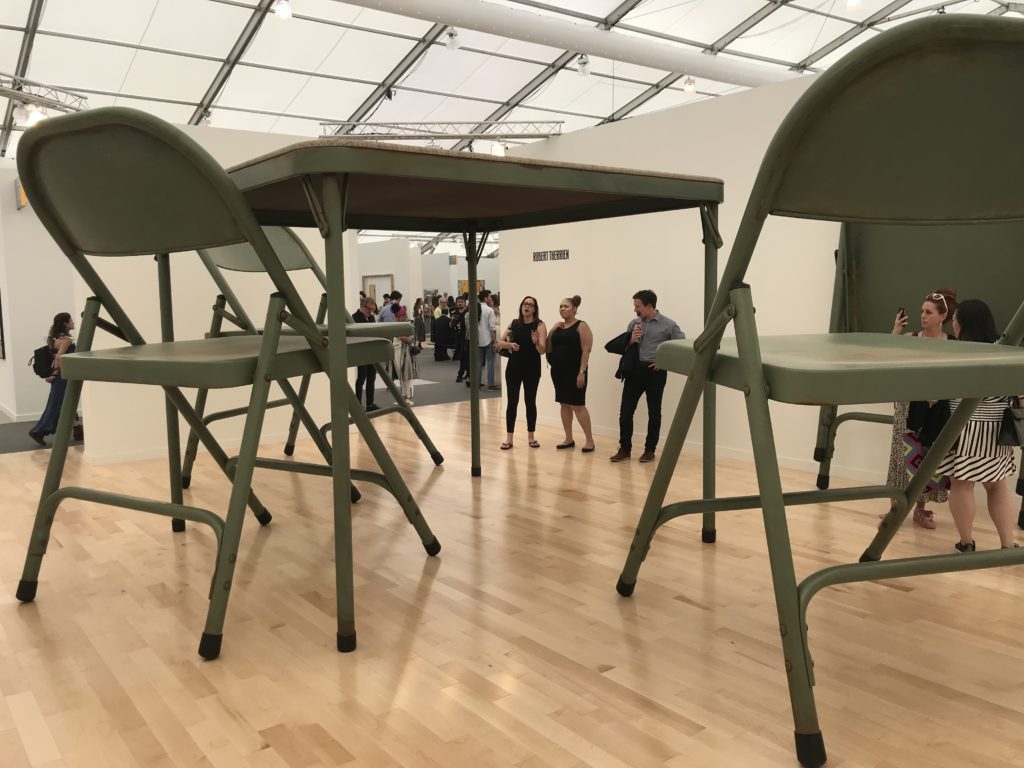
Honey, I shrunk the art collectors! Making subtle shifts in scale is a technique employed by most every artist to draw attention and provide emphasis; gargantuan shifts in scale are the province of the most gregarious, wow-seeking artists, yielding effects that often delight. (Think Claes Oldenburg’s Spoonbridge and Cherry.) When it comes to realms of photorealistic sculpture, Evan Penny and Ron Mueck have cornered the market on making awesomely huge people; the LA artist Robert Therrien, meanwhile, is the reigning champ of making ordinary stuff colossal and yet not at all cartoonish (like Oldenburg). Rather, his big sculptures, like the humdrum folding table and chairs that he giganticized at Gagosian’s booth, are indistinguishable from the real thing except in scale—and weight, of course, which required the floor to be reinforced. Unlike the table and chairs, the work doesn’t necessarily unfold much beyond that, and it doesn’t demand a lingering look. But hey! It’s really, really fun—a Museum of Ice Cream for adults.
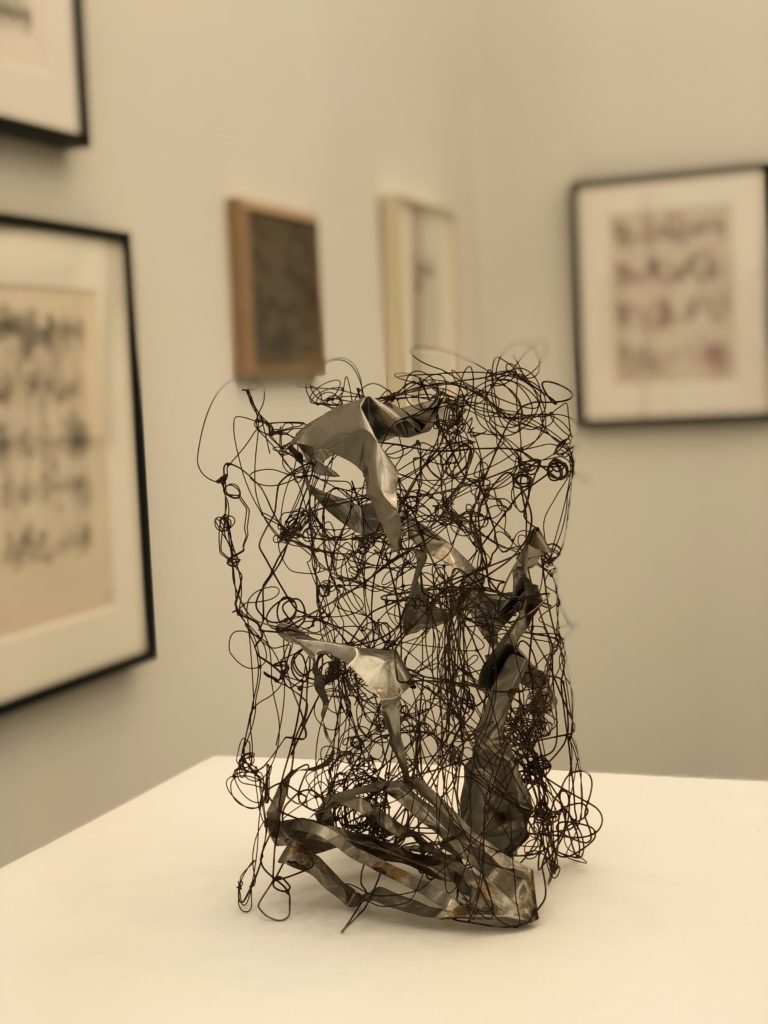
León Ferrari began his career making calligraphic drawings that took written language and shook it from its communicative shape like a piece of string, unfurling it into loping squiggles that suggested a kind of chaotic freedom. In 1961, he began rendering these drawings in space, building them into freestanding sculptures from metal wire and setting in motion a form of art making that became a sensation. This piece here, from 1962, is one of his earliest three-dimensional efforts, and it’s a gem, being sold by a Brazilian curator who had been a major champion of the artist’s work. Ferrari, of course, did not stop there—and many people, in fact, know him for his far more provocative later work, principally La Civilización Occidental y Cristiana, his 1965 sculpture of Jesus being crucified on an American bomber jet. (A pointed critique of the Vietnam War, the work was censored as “blasphemy” by none other than Buenos Aires archbishop Jorge Mario Bergoglio, now Pope Francis.)
In 1972, after ramping up his anti-church and anti-regime work, Ferrari left his country—and soon afterwards his son vanished, becoming one of the dictatorship’s infamous disappeared. The artist’s work, naturally, became angrier and condemnatory, with the notion of hell as a particular target of his wrath, because he thought the fear it inculcates leads mankind to needless pain and wicked deeds. Looking at the work in the fair, with its idealism and innocent subversion of convention, is a rather moving experience.
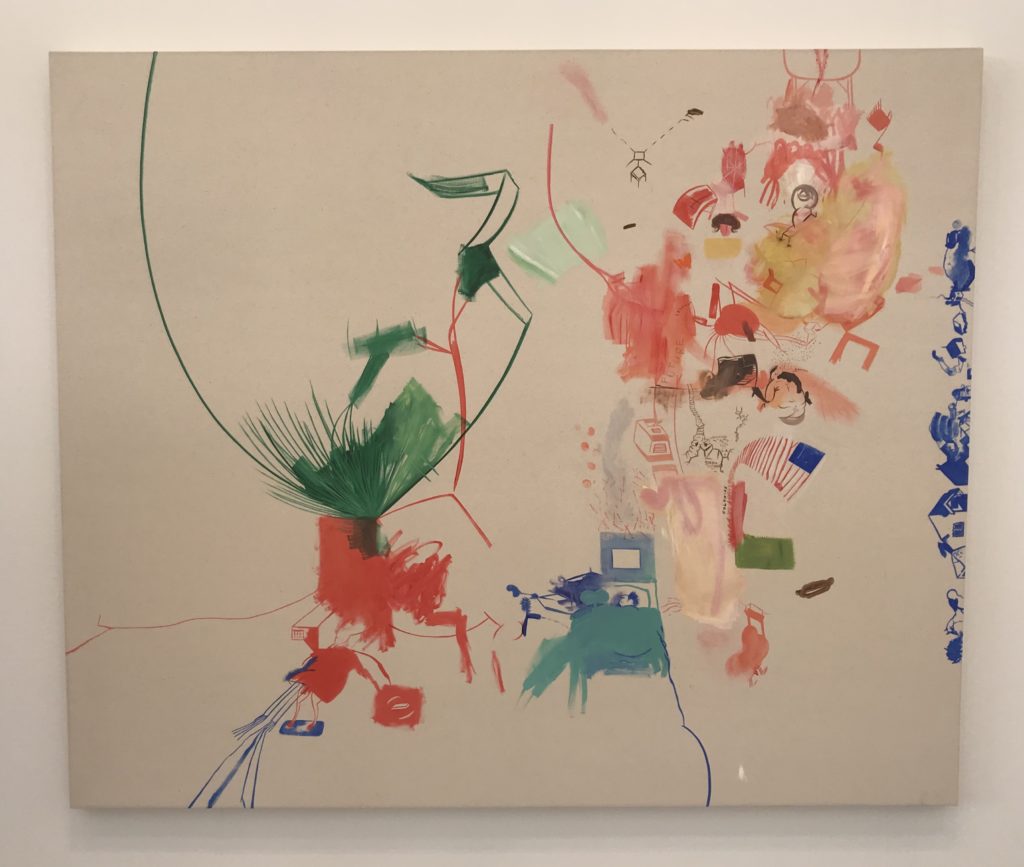
For those who know Sue Williams as the painter of squishy, squirting orifices and dangly bits, all done up in cartoon colors and Ab-Ex swooshes with some provocative politics thrown in, it’s time to get to know Sue Williams again. Now working with spare interventions on raw canvas, the artist has in fact returned to her earliest approach to the medium, which was characterized by diaristic jottings that referenced themes of feminism and abuse. The theme these days is domesticity—what happens at home, in the kitchen and in bed, behind closed doors—and the sheer amount of negative space on the canvas makes them seem risky, edgily unfinished like a Michael Krebber abstraction. (Sneaky little references abound, too, like what seems to be a reference to Lucien Freud’s famed portrait of a naked fat man’s back, to which Williams has appended a little speech bubble: “Hooray.”) It’s a beautiful painting, and it sold at the fair, but those who prefer the artist’s more provocative side are in luck too—Williams’s more paranoid work, like her infamous 9/11 truther series, will be represented in the Met’s upcoming October exhibition “Everything Is Connected: Art and Conspiracy.”
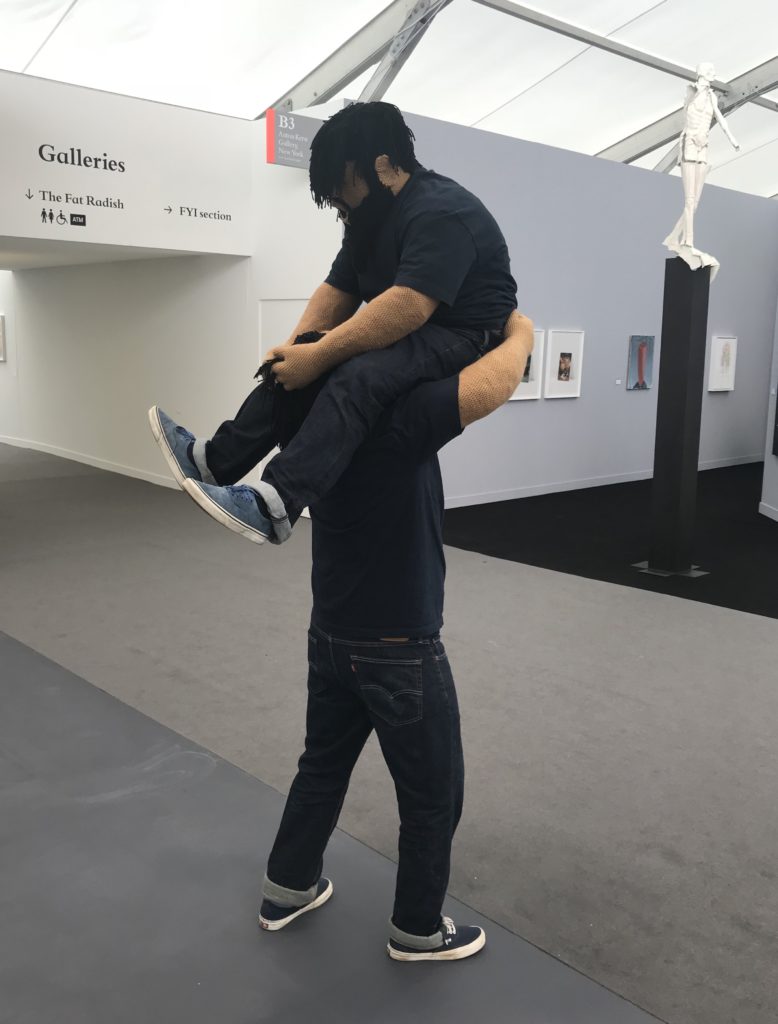
One of the younger breakout stars of the fair, the recent CalArts graduate Luis Flores, isn’t even represented by Salon 94. But he was looped into the gallery’s presentation after owner Jeanne Greenberg Rohatyn saw a work of his that a collector had bought and fell in love. What Flores does—impressively well—is knit life-size yarn self-portraits that he dresses in his trademark uniform of Levi’s, a t-shirt, and Vans. Then, he arranges them into outrageous positions, such as having two of his effigies lick a prone figure, fight amongst themselves, or even engage in some disturbing self-sexual encounters. (The one here recreates an attention-grabbing WWF move; on the fair’s second day a large school group went through the booth and the kids pointed to the sculpture and cried out, “Powerbombing!”) Not surprisingly, people who have seen the work tend to remember it, and the gallery was astonished by the number of people who came up to their booth to declare their own fascination with the artist and desire for his work, asking if there are any others available. Let’s just say there’s a good chance the gallery and Flores will be working together again in the future.